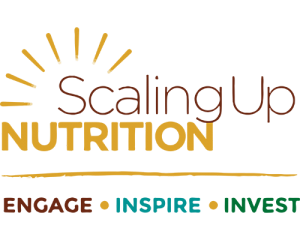Accelerating Action and Opening Opportunities
A Closer Integration of Climate and Nutrition
2023 I-CAN Baseline Assessment
2023 I-CAN Baseline Assessment
The Initiative on Climate Action and Nutrition (I-CAN) is a multistakeholder, multi-sectoral global flagship program
Launched by Government of Egypt at the “Adaptation and Agriculture” thematic day at COP27
Core partners include WHO, FAO, UN-Nutrition secretariat, GAIN and SUN
Formally hosted as a climate and nutrition working group under the Alliance for Transformative Action for Climate and Health (ATACH) co-chaired by the Government of Egypt and GAIN.
It is likely that warming will exceed 1.5°C during the 21st century
As many as 828 million people are undernourished
The impact of malnutrition in all its forms is estimated to be US$3.5 trillion each year
The I-CAN baseline report aims to provide a snapshot into the current state of integration between climate and nutrition. Across the board, we see low levels of climate-nutrition integration within action, data capacities, policy and strategy, and finance. However, there are many opportunities where climate and nutrition can be closer integrated to accelerate win-win benefits in both domains. I-CAN strives to further advance actions in this area.
The intersection of climate and nutrition action is rich with opportunity to accelerate advancement in both outcomes. For the first time an evidence based report shines a light on those opportunities for decision makers in government, development agencies and the private sector.
As we approach COP28 a new landscape of opportunity to advance climate and nutrition action has been revealed. We must seize these opportunities for people and planet.
Lawrence Haddad, Executive Director, GAIN
For the I-CAN baseline report, we have developed a methodology where 4 classification levels are used to determine the degree of integration between climate and nutrition. These classification levels are used across a range of indicators (where applicable) and are designed to be action-oriented progressing toward the higher levels.
27 EU countries submitted a joint NDC which we have counted as 1 NDC in this analysis
(GNR Commitments Source: Global Nutrition Report NAF Commitment Tracker, version as of April 2023)
(FBDGs Source: FAO FBDG Database, versions as of July 2023)
(Public Food Procurement Nutrition-Related Policies Source: WHO GINA database, version as of June 2023)
What are the applications of the I-CAN baseline report findings towards improving climate and nutrition outcomes?
First, the report identifies opportunities for countries, businesses, and development agencies to improve integration of climate and nutrition action to spur acceleration in the outcomes of both. For example, many initiatives target food and agriculture broadly, which could be leveraged to include more explicit considerations of nutrition.
Second, there are bright spots with certain countries, businesses and agencies leading the way. The NDC of Benin, the Climate NAP of Bangladesh, and the NNP of Ethiopia are all best practices included in the I-CAN baseline report. Cross-learning and information sharing will go a long way towards integrated climate and nutrition advancements.
Third, the actions that serve to accelerate climate and nutrition need to become better understood and socialised. FAO’s I-CAN paper, Climate Action and Nutrition: Pathways to Impact, highlights four core systems: agri-food, water, social protection, and health, where opportunities to further advance climate-nutrition integration exist.
Fourth, there were many challenges in collecting the baseline data. For example, an area which we could not assess includes the amount of agriculture research and development funding that links climate and nutrition. We hope that methods for collecting integrated climate-nutrition data will be improved and hence enhance data availability in the future.
Fifth, we very much hope that individual countries will use the baseline to set their own targets for some of these indicators. All country-level data used in our analysis are available upon request. Tracking of indicators towards targets will help governments assess progress and identify areas where more support can be brought to bear.
2030 is drawing close. Time is of the essence as we strive to achieve the SDGs, aiming to eliminate hunger and malnutrition whilst ensuring positive impacts for climate action and our natural environment. With sustained and combined efforts, closer integration between climate and nutrition is possible, and will have positive impacts on the lives of millions around the world – today and tomorrow.


With thanks to

